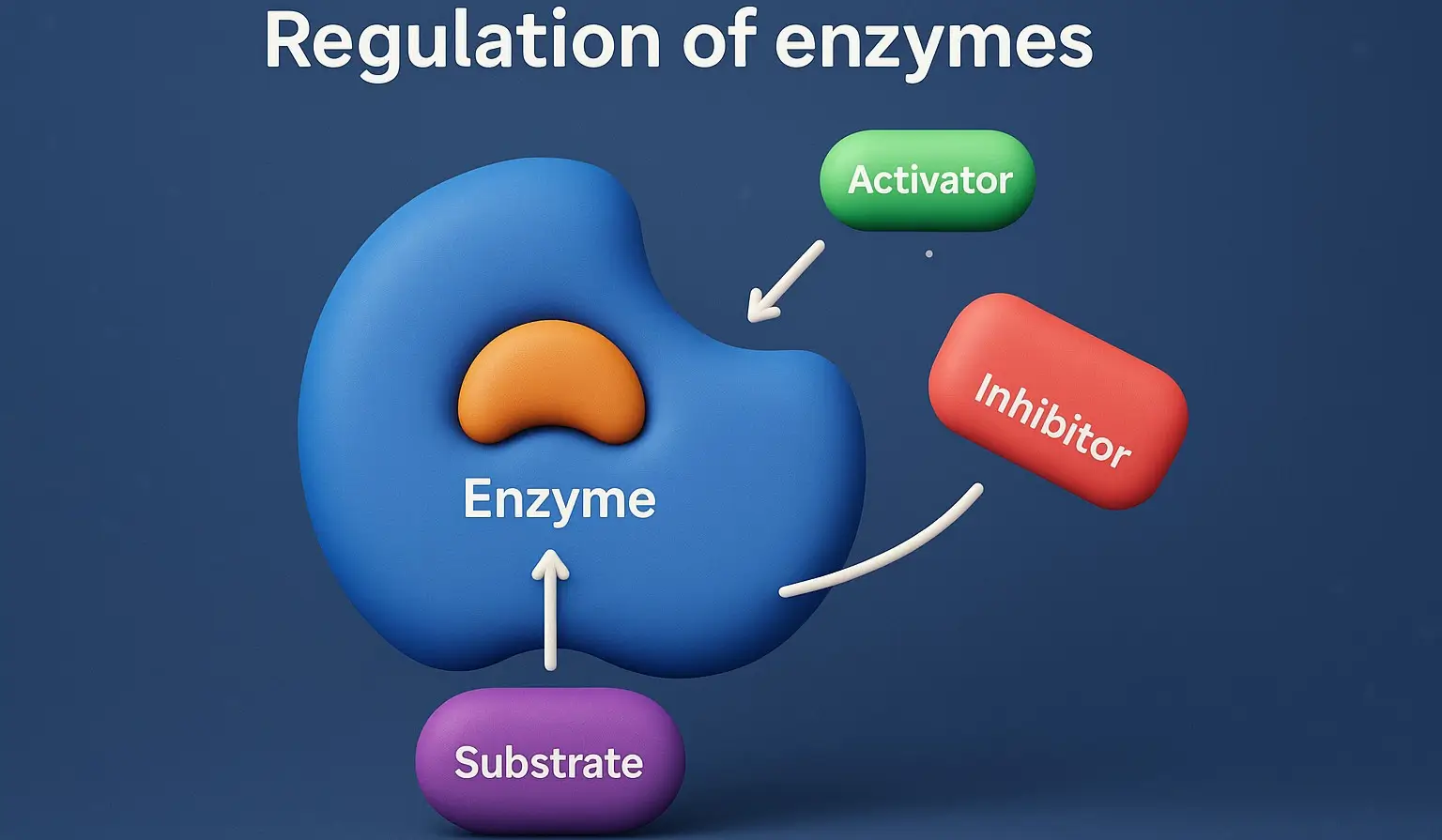- Regulation of enzymes through various mechanisms to ensure that biochemical reactions occur at the appropriate times and rates within a cell.
- Three primary methods is regulation of enzymes are enzyme induction and repression, and allosteric regulation.
Enzyme Induction and Repression
-
Enzyme Induction
- Definition: The process by which the synthesis of an enzyme is increased in response to the presence of a specific substrate or other molecules.
- Mechanism: When a substrate or an inducer molecule is present, it activates the transcription of specific genes coding for the enzyme, leading to increased enzyme production.
- Example: The lac operon in E. coli.
- Inducer: Lactose or allolactose.
- Mechanism: In the presence of lactose, the lac repressor is inactivated, allowing RNA polymerase to transcribe the genes for lactose-metabolizing enzymes.
-
Enzyme Repression
- Definition: The process by which the synthesis of an enzyme is decreased in response to the presence of a specific end product or other molecules.
- Mechanism: The end product of a metabolic pathway can act as a repressor, binding to a regulatory protein and inhibiting gene transcription for the enzyme.
- Example: The trp operon in E. coli.
- Repressor: Tryptophan.
- Mechanism: When tryptophan levels are high, it binds to the trp repressor, activating it. The activated repressor binds to the operator region, blocking transcription of tryptophan synthesis enzymes.
Allosteric Regulation
- Definition: Regulation of an enzyme’s activity through the binding of an effector molecule at a site other than the enzyme’s active site, known as the allosteric site.
- Mechanism: Allosteric effectors can be activators or inhibitors. Binding of an effector induces a conformational change in the enzyme that affects its activity.
-
Allosteric Activation
- Definition: An allosteric activator binds to the allosteric site and induces a conformational change that increases enzyme activity.
- Example: Adenosine monophosphate (AMP) as an activator of glycogen phosphorylase.
- Mechanism: AMP binding activates glycogen phosphorylase, enhancing glycogen breakdown to glucose-1-phosphate.
-
Allosteric Inhibition
- Definition: An allosteric inhibitor binds to the allosteric site and induces a conformational change that decreases enzyme activity.
- Example: ATP as an inhibitor of phosphofructokinase-1 (PFK-1).
- Mechanism: High levels of ATP bind to an allosteric site on PFK-1, reducing its activity and thus slowing down glycolysis.

